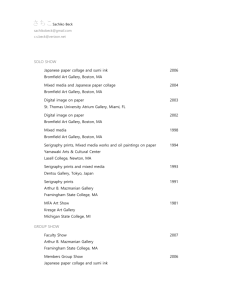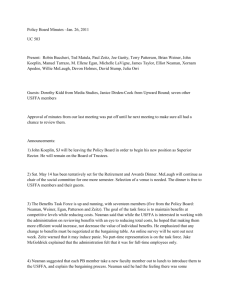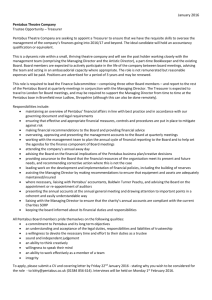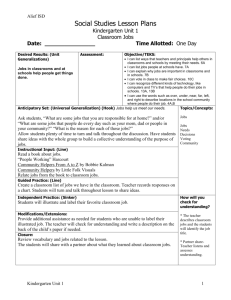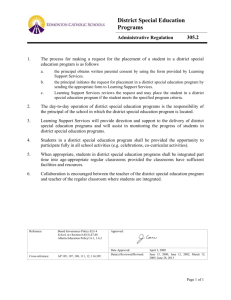March 21
advertisement
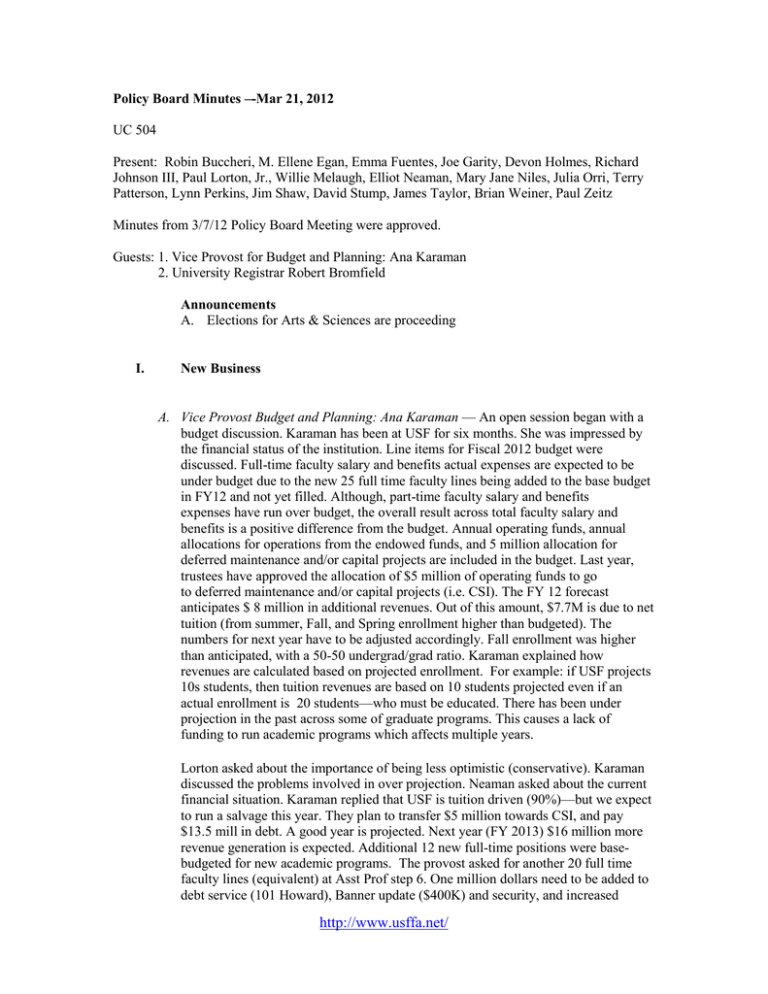
Policy Board Minutes –-Mar 21, 2012 UC 504 Present: Robin Buccheri, M. Ellene Egan, Emma Fuentes, Joe Garity, Devon Holmes, Richard Johnson III, Paul Lorton, Jr., Willie Melaugh, Elliot Neaman, Mary Jane Niles, Julia Orri, Terry Patterson, Lynn Perkins, Jim Shaw, David Stump, James Taylor, Brian Weiner, Paul Zeitz Minutes from 3/7/12 Policy Board Meeting were approved. Guests: 1. Vice Provost for Budget and Planning: Ana Karaman 2. University Registrar Robert Bromfield Announcements A. Elections for Arts & Sciences are proceeding I. New Business A. Vice Provost Budget and Planning: Ana Karaman — An open session began with a budget discussion. Karaman has been at USF for six months. She was impressed by the financial status of the institution. Line items for Fiscal 2012 budget were discussed. Full-time faculty salary and benefits actual expenses are expected to be under budget due to the new 25 full time faculty lines being added to the base budget in FY12 and not yet filled. Although, part-time faculty salary and benefits expenses have run over budget, the overall result across total faculty salary and benefits is a positive difference from the budget. Annual operating funds, annual allocations for operations from the endowed funds, and 5 million allocation for deferred maintenance and/or capital projects are included in the budget. Last year, trustees have approved the allocation of $5 million of operating funds to go to deferred maintenance and/or capital projects (i.e. CSI). The FY 12 forecast anticipates $ 8 million in additional revenues. Out of this amount, $7.7M is due to net tuition (from summer, Fall, and Spring enrollment higher than budgeted). The numbers for next year have to be adjusted accordingly. Fall enrollment was higher than anticipated, with a 50-50 undergrad/grad ratio. Karaman explained how revenues are calculated based on projected enrollment. For example: if USF projects 10s students, then tuition revenues are based on 10 students projected even if an actual enrollment is 20 students—who must be educated. There has been under projection in the past across some of graduate programs. This causes a lack of funding to run academic programs which affects multiple years. Lorton asked about the importance of being less optimistic (conservative). Karaman discussed the problems involved in over projection. Neaman asked about the current financial situation. Karaman replied that USF is tuition driven (90%)—but we expect to run a salvage this year. They plan to transfer $5 million towards CSI, and pay $13.5 mill in debt. A good year is projected. Next year (FY 2013) $16 million more revenue generation is expected. Additional 12 new full-time positions were basebudgeted for new academic programs. The provost asked for another 20 full time faculty lines (equivalent) at Asst Prof step 6. One million dollars need to be added to debt service (101 Howard), Banner update ($400K) and security, and increased http://www.usffa.net/ scholarships ($5 mill). Undergraduate full-time tuition was increased by 3.9%, while the total full-time undergraduate package (tuition, fees, room, and board) was increased by 3.7%. In balancing the FY13 budget, units will be asked to reallocate about $2.7M towards University-wide initiatives. Weiner asked about the $2.7 million—does it take into account the under projection? Karaman replied yes, there is a margin of error. Weiner then asked about the endowment return—4.5% of income generation. Karaman replied that our endowment is small for an institution of this size. Endowments take us through the hard times—and feels that we should double the amount. Donors and quasi endowment are the ways to increase the endowment. She stresses the importance of this. Johnson asked how long this would take. 2% of revenues can be put into quasi endowment annually. Neaman asked what % of total budget that goes to faculty: $68.3million for 330 full-time faculty, $18.3 million for part-time. We allocate 1/3 for faculty—should we have more faculty or higher salaries? Stump asked about the money needed to spend on capital projects—potential deferred maintenance is needed. $140 million in deferred maintenance is what we currently have. Budget allocation for deferred maintenance is wise—money should be spent for deferred maintenance. Taylor mentioned the Folger Building (101 Howard)—is this taken into consideration to the budget? Karaman replied that this is a building to help us expand. We cannot grow >1% on the main campus (agreement with neighbors). Move some grad programs that are needed downtown. The PB invited her back for further discussion. B. University Registrar Robert Bromfield —An open discussion began. Niles asked about the existence of a published standard schedule. Bromfield replied that there is a schedule matrix that is in the final approval stage. Zeitz asked is this was new—no. Fridays still seem quiet. More courses are being offered and over time, and this should change. Niles further asked about the time difference between some classes: How can a 4 unit class be offered for different seat times? Orri added that the TTH 4:35 class was 5 minutes longer than the MW 4:45 class. Niles further addressed the short amount of time between classes. Bromfield replied that students are taking more classes to fulfill their degree requirements. Neaman asked about “unrooming”. What are the criteria? Bromfield replied that the departments address the need for specific rooms (20% can be pre-assigned). The remaining classes are put through an algorithm—leaving some rooms that are not roomed. These courses are scheduled off-matrix. This is primarily an Arts & Sciences situation. Neaman asked about departments who use the full schedule—do they get “credit” for it? Bromfield replied that some courses are not placed. The deans help distribute the courses. Neaman asked again about getting credit for optimizing across the schedule. Does the algorithm look at this? No. Bromfield said that the University is changing the algorithm (not published yet). So we are not getting credit after all. Egan asked about the School of Nursing and Health Professions’ clinical hours off campus. Do they get credit for that? Bromfield did not have an answer for this. The algorithm is for on campus courses only. http://www.usffa.net/ Weiner asked about the long term plan. Bromfield said not immediately but this needs to be addressed. Relocation of some graduate programs to Howard St. should help alleviate this situation, CSI should also help (17 classrooms—lab space included). Weiner asked about splitting classrooms. Bromfield said that the classrooms are limited (80). This would need serious discussion—large space would be lost. Seminar rooms are lacking. Holmes said that the Department of Rhetoric and Language is having problems with being assigned rooms that have no AV system. In fact, the Department recently learned that eight of their fall courses will be in rooms without this equipment. This is a particular problem for public speaking courses. She added that classrooms in Underhill are not acceptable, and also that computer carts cannot be delivered to these rooms. Bromfield explained that there will be a new system that allows the academic schedulers in the various colleges to indicate AV needs, so the problem is being addressed. Bromfield distributed a table providing a count of the number of course sections in the College of Arts and Sciences by time block, for Fall terms ’08 through ’11. Stump noted that, according to the table, there has been a 33% increase in the number of course sections from Fall 2008 to Fall 2011. Bromfield responded that this is a matter of increased enrollment but also one of exceeding course caps, which require opening additional sections. He added that deans may have to revisit enrollment caps. Zeitz later asked about this increase in sections –does this correspond to an increase in students? Bromfield said that there were 250 more undergraduate students in fall 2011 compared to fall 2008. Weiner added that the increase in sections may also reflect an increase in the number of freshman seminars. Again with respect to the table, Zeitz noted that the attempt to move classes away from prime time is clearly failing. [example: Wed midday sections from ’08 to ’11 is 194 to 192 to 203 to 213]. Weiner then asked Bromfield to explain his tasks as registrar. He said that the registrar’s roles are 1) to provide a means by which students enroll in classes, 2) to publish the course catalog, 3) handle transcript and enrollment verification, 4) prepare the final exam schedule, 5) handle classrooms, 6) inform data services/work with Alan Ziajka (Institutional Research), 7) the graduation center is also a component of the Registrar’s office. Lorton asked who should be contacted about furniture being arranged in classrooms, and Bromfield said that his office may be contacted. He also said that the cycle of furniture replacement is being addressed with the plan to make the furniture more moveable. Neaman attempted to again ask about “unrooming” and whether a department gets credit for distributing its classes evenly throughout the week and time slots. The credit, he explained, is that the Department will NOT have its classes unroomed…Bromfield said that, at this point, such credit is not considered in the unrooming process. Neaman also asked if the new schedule, which caused many faculty and departments great distress, is addressing the problem of low classroom inventory. Bromfield talked about the distributed campus model and the CSI that will help improve classroom inventory and that regular reviews will be done to determine whether the schedule matrix is addressing the problem, and make adjustments as needed. http://www.usffa.net/ Weiner asked what the outcome has been so far regarding improving the four-year graduation rate. Bromfield responded that there are no formal data at this point but that there is an encouraging uptick in the rate, as well as an uptick in SAT scores. In response to that and to Patterson’s question about one-year attrition rates, Bromfield said that Ziajka is currently crunching the numbers for the past 3-4 years. With respect to classroom inventory, Bromfield said that there are 80 classrooms located on campus. Neaman asked how this compares to other schools, Bromfield said that at Princeton, there were 300 classrooms for 7600 students, whereas Columbia has 160 classrooms. He added that classrooms are a challenge for urban universities. Neaman thanked Bromfield for attending the Policy Board meeting. C. Other business—Egan distributed the new Department Chair Job Description and asked that the members of the Policy Board review it for the next meeting. She noted that there are great concerns among the faculty in the School of Nursing and Health Professions. The meeting was adjourned at 5:00 PM Submitted by Julia Orri Policy Board Secretary http://www.usffa.net/



